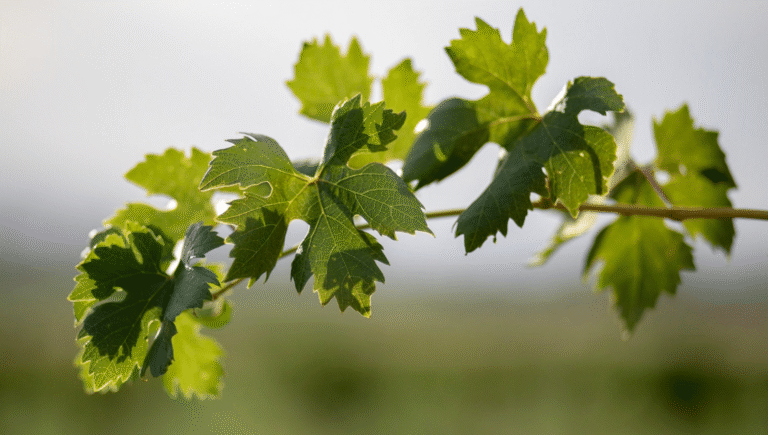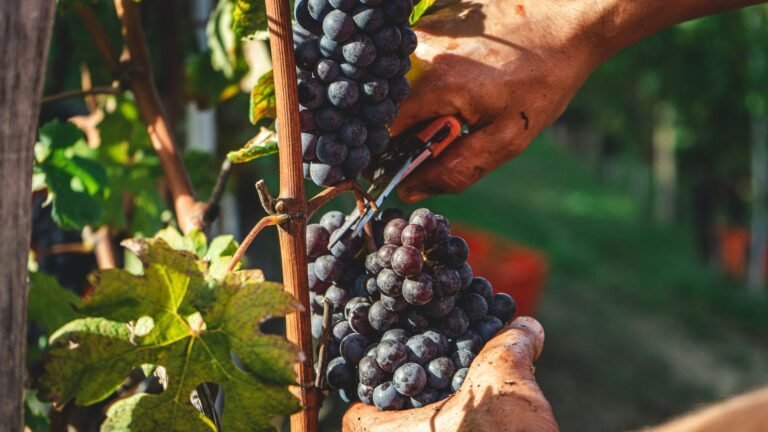Have you ever walked through a vineyard and wondered whether those leaves belong to a Cabernet Sauvignon or a Chardonnay? Being able to tell grape varieties apart at first glance might sound like something only winemakers or sommeliers can do — but here’s a secret: it’s easier than you think. With a few simple visual cues, you can start identifying different grape varieties by their leaves, bunches, and even the way the vines grow. Perfect knowledge to impress your friends on your next wine-tasting trip!

1. Look at the Leaf Shape
The most distinctive clue lies in the vine’s leaves. Each grape variety has its own “signature look.” Cabernet Sauvignon – The leaves are medium-sized, deeply lobed, and have a slightly rough texture. They look a bit like a hand with well-defined fingers. When mature, they often show a reddish tint along the edges in autumn. Merlot – Similar to Cabernet, but with rounder lobes and a smoother surface. The leaves tend to be softer and a brighter green. Chardonnay – Recognisable for its broad, flat leaves with shallow lobes and a slightly crinkled look. Think of a large, almost circular leaf with soft edges. Sauvignon Blanc – These leaves are smaller and more delicate, often with sharp teeth on the edges and lighter green tones. They look fresher and more angular than Chardonnay’s. Pinot Noir – Pinot vines are elegant and thin, with small, roundish leaves that often have three lobes instead of five. The leaf’s underside has a soft, almost velvety feel.

2. Notice the Growth Pattern
Different vines grow differently. Cabernet Sauvignon and Merlot tend to have strong, upright shoots — they love the sun and grow quite neatly. Pinot Noir, on the other hand, is more delicate, with thinner stems that often need extra care and support. Chardonnay vines can appear more vigorous and bushy, especially in warm regions, where they produce lots of leafy growth. Next time you visit a vineyard, look at the overall personality of the plant — some vines are tidy and upright, while others are wilder and sprawling. That personality often reflects their grape variety.

3. Check the Grapes Themselves
If you’re visiting during the growing season, pay attention to the fruit: Cabernet Sauvignon grapes are small, dark, and tightly packed. Merlot grapes are slightly larger and softer, giving them that lush, fruity character in wine. Chardonnay grapes are golden-green, medium-sized, and grow in compact clusters. Sauvignon Blanc grapes are usually pale green and slightly translucent, with a more open cluster. Pinot Noir grapes are small, delicate, and thin-skinned — very sensitive to the elements.

Why It’s Worth Noticing
Recognising vines adds a new dimension to your wine experience. It helps you connect what’s in your glass to the land where it grows — the famous terroir. You’ll start noticing how grape varieties express themselves not only in flavour but also in their physical traits. So next time you stroll through a vineyard, take a closer look. You might find yourself saying, “That looks like a Pinot Noir vine,” and actually be right — a small, delightful way to surprise your friends (and maybe even the winemaker).
